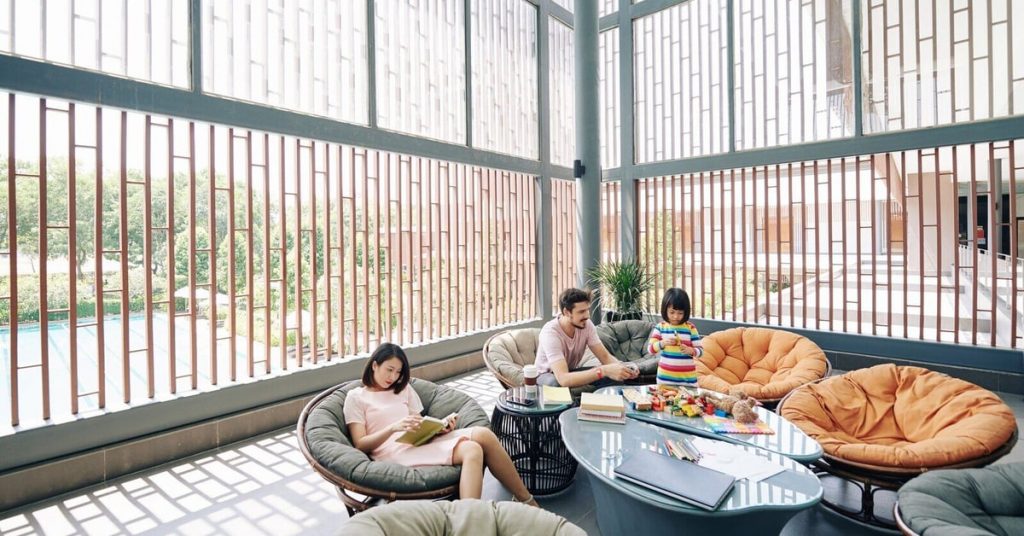
As we approach 2025, sunrooms are evolving into multifunctional spaces that blend with nature and technology. Discover the latest trends reshaping these serene retreats.
The sunroom concept has been around for ages, but as we look to 2025, this space is changing dramatically. New trends are emerging that blend functionality with aesthetics, making this area a crucial part of home design. Families are looking for ways to make their sunrooms more versatile, resulting in developments that cater to both relaxation and productivity. This article will explore key trends such as multifunctionality, biophilic design, advanced technology integration, sustainable materials, color trends, and health benefits associated with sunroom living. By the end, readers will discover innovative ways to enhance their own sunrooms, reflecting the evolving demands of contemporary lifestyles.
One of the most significant trends in sunroom design for 2025 is the growing emphasis on multifunctionality. Today’s homeowners are looking for spaces that serve multiple purposes. A sunroom is no longer just a place to soak in sunlight; it can serve as a home office, workout area, or even a cozy dining nook.
As remote work becomes increasingly common, integrating workspaces within sunrooms is an appealing choice. This can involve installing modular furniture that allows for easy transformation from casual seating to professional setup, including smart desks or foldable workspaces.
Additionally, families are maximizing the usability of their sunrooms by adding features like outdoor kitchens, play areas for children, or even pet zones. This trend not only increases house value but also allows families to spend more quality time together indoors and outdoors simultaneously.
Biophilic design is a concept gaining traction in home design and is set to boom within sunrooms in 2025. With a focus on creating spaces that connect people with nature, biophilic design emphasizes natural materials, greenery, and ample light.
In sunrooms, this could mean incorporating large windows, skylights, and living walls filled with plants. Natural wood finishes and stone accents are also popular choices that promote earthy aesthetics while adding to the indoor ambiance.
Moreover, this trend reflects a broader awareness of mental health benefits associated with nature. Studies link natural environments with reduced stress levels and increased mindfulness. Sunrooms designed with biophilia in mind invite homeowners to relax and recharge, whether enjoying a cup of coffee or indulging in yoga sessions.
As technology continues to shape our lives, it’s no surprise that smart home features are making their way into sunrooms. By 2025, expect to see more homeowners incorporating advanced technology to enhance comfort and convenience within these spaces.
Smart glass is one innovation making waves in sunroom design. This type of glass can change transparency based on temperature, providing privacy or shading as needed while maintaining optimal natural light. Integrated heating and cooling systems will become more common, allowing homeowners to maintain the perfect atmosphere year-round.
Additionally, voice-activated assistants can control lighting, sound systems, and even plant watering systems, creating a seamlessly interactive experience. Comfort and efficiency go hand-in-hand, making sunrooms enjoyable regardless of the climate outside.
Sustainability is a crucial topic in homebuilding and renovation, and the trend will increase significantly in sunrooms by 2025. Homeowners are becoming more conscious of their choices, seeking materials that are eco-friendly, durable, and energy-efficient.
Recycled and reclaimed materials are likely to dominate the design landscape. Think reclaimed wood for beams or flooring and accessories crafted from repurposed items. Additionally, solar panels integrated into sunroom designs will support effective energy consumption, making these spaces not just beautiful but also sustainable.
Moreover, employing energy-efficient windows will help to reduce heating and cooling costs, while maximizing the amount of sunlight entering the room. This creates a harmonious balance of luxury and responsibility, allowing homeowners to enjoy their spaces guilt-free.
As personal taste evolves, so do color preferences for sunroom designs. Sunrooms in 2025 are expected to embrace warmer, more organic tones inspired by nature. Shades of green, terracotta, ochre, and earthy browns are likely to become popular choices.
Such colors help create a calming atmosphere, encouraging relaxation. Lighter shades can open up the space and reflect sunlight beautifully, while deeper hues can provide contrast and warmth. Families can personalize their sunrooms by combining these tones with natural elements like wood or stone, resulting in harmonious escapes that connect to the outdoors.
Accent colors can also be introduced through textiles and decor, adding splashes of vibrancy while keeping the overall feel grounded and uplifting. Balancing colors creates a cohesive look, reflecting the desire for tranquility and comfort in modern home design.
Aside from aesthetic and practical advantages, sunrooms are increasingly recognized for their health benefits. As the hustle and bustle of life continues, people are seeking refuge in greener, more inviting spaces to improve mental and physical well-being.
Exposure to sunlight has been linked to enhanced mood and better sleep patterns. Sunrooms, with their abundance of light, provide the perfect setting for morning meditation, yoga sessions, or even a cozy reading nook with plenty of natural light. This contributes not only to relaxation but also to increased productivity and creativity.
Furthermore, a well-designed sunroom encourages more indoor gardening, promoting a closer connection to nature. Involving yourself in planting and caring for indoor plants can reduce stress and boost feelings of happiness, ultimately leading to a more vibrant lifestyle.